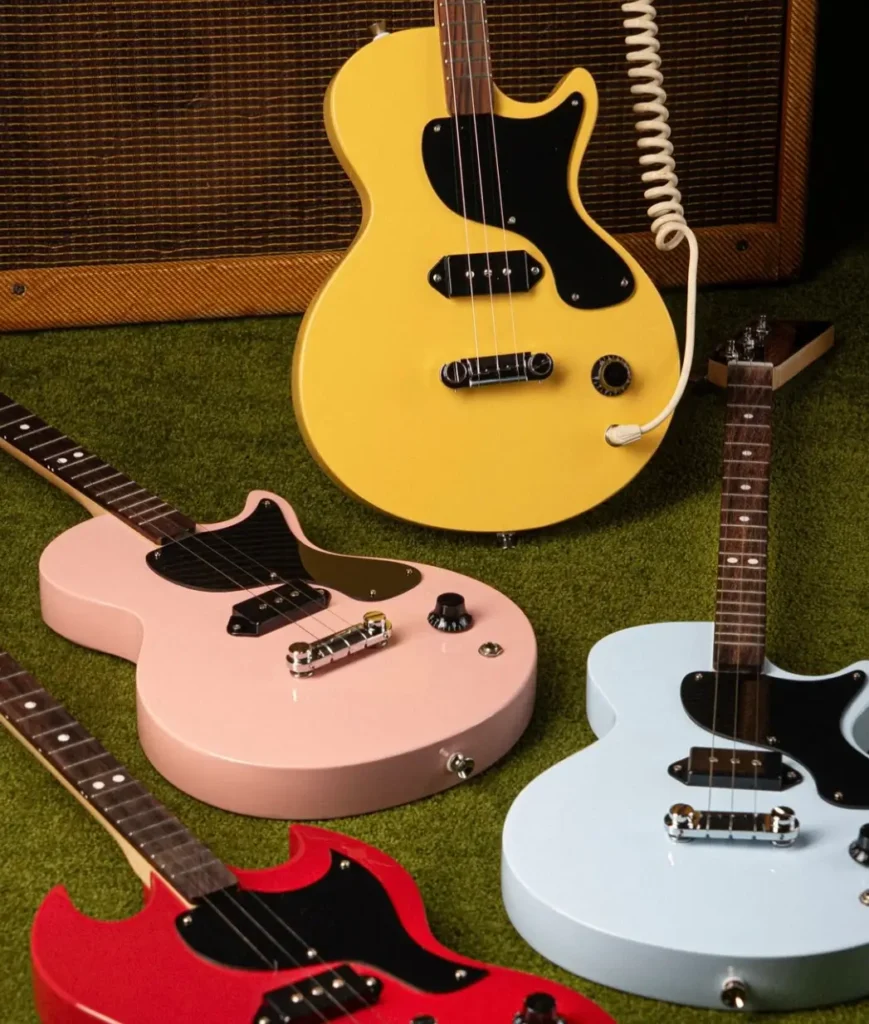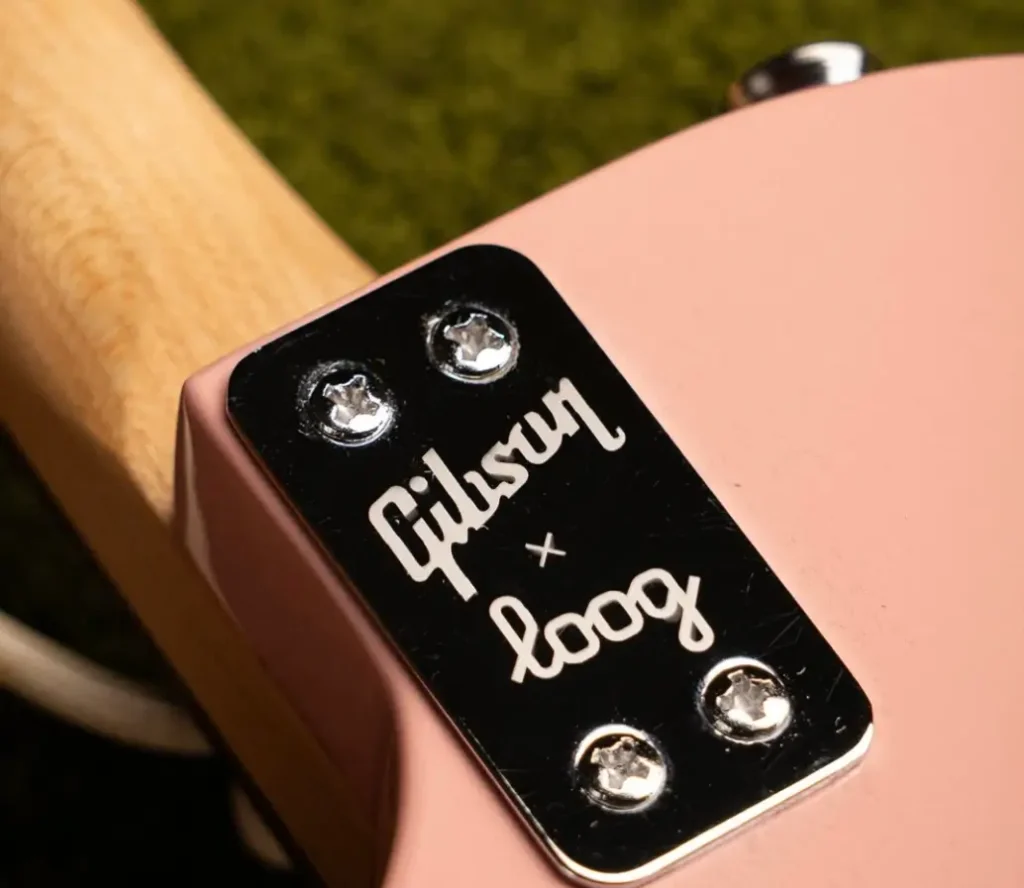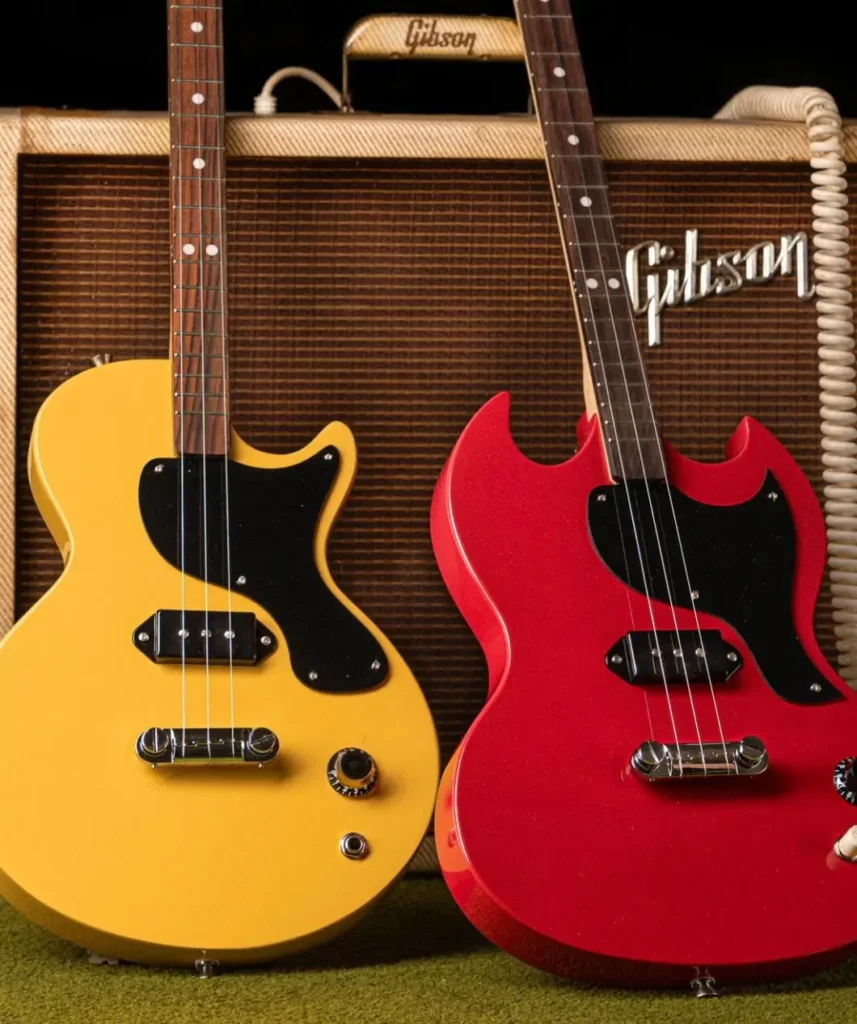At first glance, the Gibson x Loog Guitar might look like a novelty — bright-coloured, and just three strings. Yet beneath that play shell lies a sincere mission: to make authentic electric-guitar culture accessible to the youngest hands without diluting Gibson’s decades-long legacy of tone and style.
This is not simply a “kids’ guitar.” It’s a scaled-down re-engineering of rock tradition, designed by Loog Guitars with Gibson’s blessing and craftsmanship insight. Together, they’ve created a model that teaches, inspires, and even invites adults to sneak a riff or two when no one’s looking.
origin
Loog began as a Kickstarter curiosity in 2011, founded by Rafael Atijas, whose mission was to simplify the intimidating learning curve of the guitar. By stripping the instrument down to three strings — tuned like the top three of a standard six-string — Loog encouraged immediate playability. Kids could strum simple shapes that directly translated to full-size guitars later on.
Meanwhile, Gibson has been crafting instruments for over 130 years — the Les Paul, SG, ES-335 — each model an emblem of popular music’s DNA. The brand’s aura has always leaned toward the mythical: Jimmy Page’s solos, Slash’s swagger, Joan Jett’s fire. For Gibson to collaborate with Loog is to bring that myth down to human scale — or rather, child scale.
The partnership fuses two philosophies: heritage and accessibility. Gibson brings its sense of craft, tone, and finish; Loog contributes its pedagogical understanding of how beginners learn. The result is a guitar that bridges generations.
design
Physically, the Gibson x Loog resembles a miniature Les Paul more than a toy. Its solid-wood body, single pickup, and sleek pickguard echo the same silhouette that shaped blues, rock, and punk history. The scale length is shortened, but the attention to proportion remains deliberate — every curve is recognizably Gibson.
Loog’s three-string design makes it intuitive for small hands. Fewer strings mean faster progress, fewer frustrations, and fewer sore fingertips — but importantly, no compromise in tonal character. Plugged in, the guitar produces a genuine electric tone, driven through the same amplification setups that Gibson owners use.
Available in Cherry Red, TV Yellow, and Pelham Blue, the finish options evoke Gibson’s vintage palette. The headstock bears both logos — a visual handshake between the old guard and the new wave.
flow
For a young learner, playing the Gibson x Loog is an empowering moment. The guitar feels light yet balanced, the neck slim but stable. The simplified tuning (E-B-G) means chords like G, C, and D appear instantly understandable, transforming early practice sessions from theory drills into recognizable songs.
The instrument’s light gauge strings and lower tension further aid comfort. A wraparound bridge maintains tuning stability, while the small-scale fretboard encourages finger accuracy — a factor that pays dividends when transitioning to standard guitars later.
Yet perhaps the most magical feature lies in what happens when an adult plugs it in. Through a decent amp, the three-string Gibson x Loog growls and sings with surprising authority. Its pickup delivers bright, articulate tones; its wood body resonates far beyond its size. It’s playful enough for kids, but legitimately musical for grown-ups.
edu
What sets Loog apart from traditional “beginner” guitars is its integrated ecosystem. Every instrument comes with augmented-reality learning tools, an app featuring chord diagrams, interactive video lessons, and even AR overlays that show finger placement directly on screen.
This methodology turns the Gibson x Loog into a digital-age classroom. Instead of dry notation, children learn through visual feedback and real-time correction, often matching the dopamine-rich flow of rhythm games.
Furthermore, Loog’s system ensures continuity: once players master the three-string version, they can easily graduate to Loog’s six-string models — and eventually, full-size Gibsons. The chord shapes and logic remain consistent. That ladder of progression makes the $229 investment more than a toy purchase; it’s a stepping stone into musicianship.
small
Where many children’s instruments cut corners on materials, Gibson insisted on authenticity. The guitar’s body is made from solid paulownia wood, known for its lightweight resonance, while the maple neck and rosewood-style fretboardensure tactile familiarity. The single-coil pickup is custom-voiced to preserve clarity, even when running through distortion or effects pedals.
Hardware choices reflect Gibson’s aesthetic language: chrome tuners, cream-colored pickup rings, and that unmistakable Les Paul contour. Even the jack plate and strap buttons are metal, not plastic. The result is an instrument that feels substantial — built to survive drops, lessons, and spontaneous jam sessions.
why
Child development specialists often stress the importance of authentic sensory feedback in early music education. Plastic imitation instruments, with tinny or electronic tones, fail to connect the brain’s motor learning circuits to the genuine tactile rewards of acoustic vibration.
The Gibson x Loog solves this elegantly. By producing a real analog tone, complete with string tension, resonance, and amplification, it anchors the child’s auditory experience in the physical truth of music-making. That authentic feedback loop reinforces motivation and confidence.
It’s no accident that many adult musicians recall a vivid memory of their first real instrument — not the toy keyboard, but the one that made them feel like they were in the band. Gibson and Loog clearly understand this psychological dimension.
symbol
This collaboration arrives at a pivotal time for guitar culture. Electric guitars, once the symbol of rebellion, are being rediscovered by Gen Z through TikTok mini-lessons and bedroom jam clips. Loog’s colorful instruments already circulate across YouTube tutorials and educational programs, while Gibson’s heritage appeals to nostalgic parents eager to share their teenage soundtrack.
The Gibson x Loog becomes more than an object; it’s a cultural bridge. Parents raised on Nirvana or Guns N’ Roses can now pass on that lineage through play, not pressure. The guitar sits proudly next to a family record player or a home-studio setup — an heirloom in the making.
tone
Despite having only three strings, the guitar offers remarkable sonic range. Clean settings reveal bell-like highs and articulate mids; drive pedals unlock crunchy blues and proto-punk textures. The limited string set encourages melodic discipline — players focus on phrasing rather than shredding.
Through a small amp or even a pedalboard, the tone evokes early garage rock or indie minimalism. It recalls the spirit of Jack White’s raw simplicity, or the stripped-down genius of the Stooges. In a way, the instrument teaches the lesson that great music isn’t about complexity — it’s about feel.
lang
Visually, the Gibson x Loog also functions as design décor. Its dimensions make it an ideal desk or wall companion, blurring the boundary between instrument and collectible. The palette — saturated primaries, retro gloss finishes — aligns with contemporary interior design trends celebrating color nostalgia and playful minimalism.
Much like IKEA’s recent design partnerships with music brands or LEGO’s Fender Stratocaster kit, the Gibson x Loog inhabits a lifestyle aesthetic. It’s an emblem of creativity, a small sculpture that symbolizes possibility.
sustain
Loog has long committed to responsible manufacturing, employing eco-friendly woods and recyclable packaging. The company also emphasizes repairability — a crucial contrast to disposable toy instruments.
By extending that ethos into the Gibson collaboration, the guitar becomes an introduction not only to music but to sustainability in design thinking. Parents can use it to start conversations about materials, waste, and longevity — topics increasingly integral to modern consumer culture.
a new
Early reviews from both educators and parents highlight the guitar’s success in combining usability with authenticity. Music teachers praise the straightforward tuning system and compatibility with standard chord charts, while parents note the immediate excitement children feel upon plugging into a real amplifier.
Social media clips featuring the Gibson x Loog have quickly spread, especially across Instagram and TikTok, where its bold visuals and miniature form attract both musicians and lifestyle influencers. Gibson’s official channels amplify this with short demo performances by up-and-coming artists, blending education and entertainment marketing.
compare
Compared with Fender’s Mini Strat or Yamaha’s JR1, the Gibson x Loog is conceptually distinct. It doesn’t shrink a six-string — it rethinks the instrument from first principles. Where others merely miniaturize, Loog simplifies intelligently, keeping the musical DNA intact.
This makes it more pedagogically potent: rather than overwhelming beginners with options, it scaffolds success through limitation. The three-string approach offers clarity where six strings often yield confusion.
leg
Every now and then, a collaboration transcends its practical purpose. The Gibson x Loog may well join that lineage of design-culture hybrids — alongside Braun’s LE Speakers or Polaroid’s Leica-inspired editions. Its fusion of educational utility, cultural nostalgia, and visual charm positions it as a future collectible.
Enthusiasts are already displaying them as part of guitar collections or studio décor, occasionally modding them with upgraded pickups or custom paint jobs. Like many limited collaborations, its scarcity may add value over time — a fact that appeals to both parents and collectors alike.
idea
The Gibson x Loog Guitar stands as a brilliant contradiction: tiny yet serious, simple yet sophisticated. It captures the soul of Gibson’s craftsmanship while embodying Loog’s accessible learning philosophy. In an era when music education often competes with screens, this instrument transforms learning into a tactile, emotional ritual.
Priced at $229, it’s not the cheapest way to start — but perhaps the most inspiring. It’s a gift that doesn’t expire after the holiday season, an object that grows alongside its player. Whether hanging on a studio wall or lying in a child’s lap, it resonates with purpose: to make music real, joyful, and generational once again.
No comments yet.











